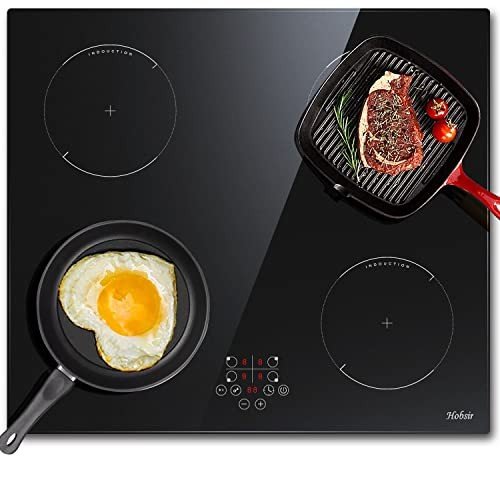Understanding Electric Ovens and Hobs: Your Guide to Cooking Efficiency
Electric ovens and hobs have actually changed the cooking landscape, providing home cooks and expert chefs a dependable, effective, and consistent way to prepare meals. As technological improvements continue to affect home appliance design, the efficiency and functionality of electric cooking systems have actually significantly improved. This short article explores the functions, advantages, and factors to consider surrounding electric ovens and hobs, providing a comprehensive introduction for anyone wanting to upgrade or purchase kitchen home appliances.
What Are Electric Ovens and Hobs?
Electric ovens are kitchen home appliances designed for baking, broiling, roasting, and other cooking techniques that need controlled heat. They utilize electric coils or convected heat elements to produce and maintain the preferred temperature level. Electric hobs, frequently described as electric cooktops, are flat surfaces with heating components that enable pots and pans to be positioned directly on them for cooking.
Table 1: Key Differences Between Electric Ovens and Hobs
| Feature | Electric Oven | Electric Hob |
|---|---|---|
| Primary Function | Baking, roasting, broiling | Heating pots and pans for cooking |
| Heating Method | Electric coils or radiant components | Induction, radiant, or ceramic components |
| Operation Temperature Range | As much as 500 ° F (260 ° C | ) Varies by style; typically lower than ovens |
| Cooking Styles | Versatile; appropriate for numerous dishes | Mainly stovetop cooking techniques |
| Area Requirement | Usually built into cabinetry | Typically standalone or integrated choices |
| Energy Consumption | Usually higher, depending upon use | More energy-efficient with induction hobs |
Advantages of Electric Ovens and Hobs
When thinking about electric ovens and hobs, it's necessary to comprehend their various advantages, which can boost the cooking experience.
1. Constant Heating
Electric ovens and hobs offer even and constant heating, which is vital for many cooking methods. This makes sure that dishes cook uniformly, minimizing the possibilities of overcooking or undercooking particular areas of food.
2. Safety Features
Modern electric ovens and hobs come equipped with numerous safety features to avoid mishaps in the kitchen. For example, numerous designs include automatic shut-off functions, hot surface area indicators, and kid security locks.
3. Easy to Use
Unlike gas models, electric ovens and hobs are simple and easy to use. The simplicity of switching on a dial or pushing a button makes them accessible for cooks of all skill levels.
4. Versatile Cooking Options
With numerous cooking techniques possible, from baking to simmering, electric designs are flexible enough to accommodate a broad variety of culinary styles and preferences.
5. Cleaning and Maintenance
Electric ovens typically include smooth surface areas that are simple to tidy, especially designs with self-cleaning abilities. Hobs, especially induction types, also supply a flat surface that is easy to clean down, making upkeep a breeze.
Popular Types of Electric Ovens:
- Conventional Ovens: Ideal for traditional baking and roasting.
- Convection Ovens: Circulate hot air for much faster, even cooking.
- Microwave Ovens: Use electro-magnetic radiation for fast heating and cooking.
- Toaster Ovens: Small counter top ovens for fast jobs.
Popular Types of Electric Hobs:
- Induction Hobs: Utilize magnetic fields for rapid heating and energy performance.
- Glowing Hobs: Feature electric coils that warm up to prepare food.
- Ceramic Hobs: Offer a smooth surface and are easy to clean.
Considerations When Choosing Electric Ovens and Hobs
While electric ovens and hobs provide various advantages, several elements must be taken into account to guarantee the right suitable for your kitchen:
1. Area Availability
Assess the readily available kitchen area before buying. Identify whether Ovens & Hobs need a built-in design or a freestanding home appliance, and measure the measurements thoroughly to ensure a great fit.
2. Cooking Needs
Recognize your cooking practices and preferences. If you routinely bake big amounts or cook complex meals, think about an oven with innovative functions like convection settings or several racks.
3. Energy Efficiency
Search for energy-efficient models that can assist save on utility expenses gradually. Energy Star-rated home appliances can be especially cost-effective.
4. Spending plan
Set a sensible budget plan that represents both the initial purchase and continuous operating expense. In addition to the appliance cost, consider setup and potential repair work.
5. Additional Features
Consider whether functions like clever technology, programmable settings, or steam cooking choices are essential for your cooking style.
FAQ Section
Q: How do I clean my electric oven?
A: Most electric ovens come with self-cleaning choices. If your model does not have this function, permit the oven to cool, then wipe down surfaces with a mixture of baking soda and water or an industrial oven cleaner.
Q: Is induction cooking safe?
A: Yes, induction cooking is considered safe as the heating aspect just activates when compatible cookware is in contact with it, decreasing the threat of burns.
Q: How long does it take for an electric oven to pre-heat?
A: Preheating times differ based on the oven's model and temperature setting however typically vary from 10 to 15 minutes.
Q: Can I utilize any cookware on an induction hob?
A: No, just ferromagnetic pots and pans works with induction hobs. Check for induction compatibility before usage to prevent damage.
Q: What is the distinction between a convection oven and a standard electric oven?
A: A stove includes a fan that distributes hot air, ensuring even cooking and reduced cooking times compared to a standard electric oven, which does not have this function.
Electric ovens and hobs supply a contemporary solution to numerous cooking requirements, providing effectiveness and dependability in the kitchen. As customers examine their alternatives, comprehending the functions, types, and factors to consider will allow them to make educated decisions. Whether one is an occasional cook or a cooking enthusiast, electric appliances can enhance the total cooking experience, bringing convenience and creativity to the table.

